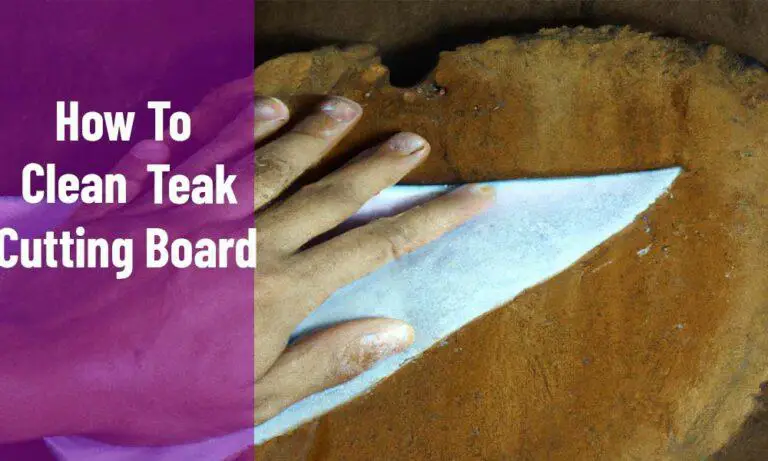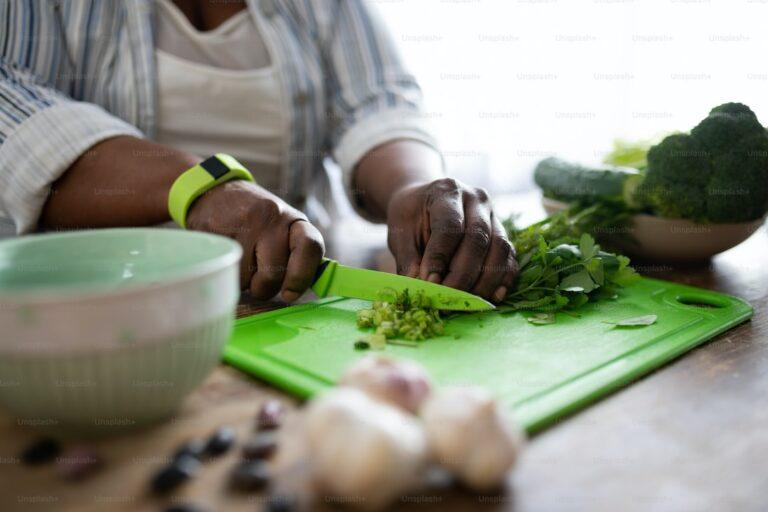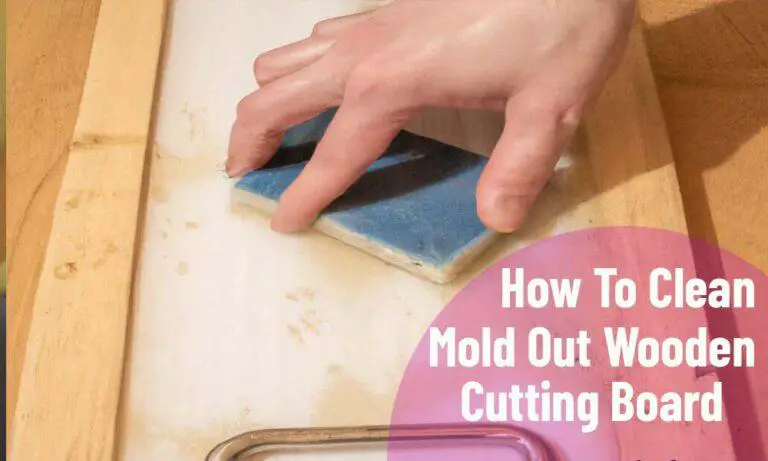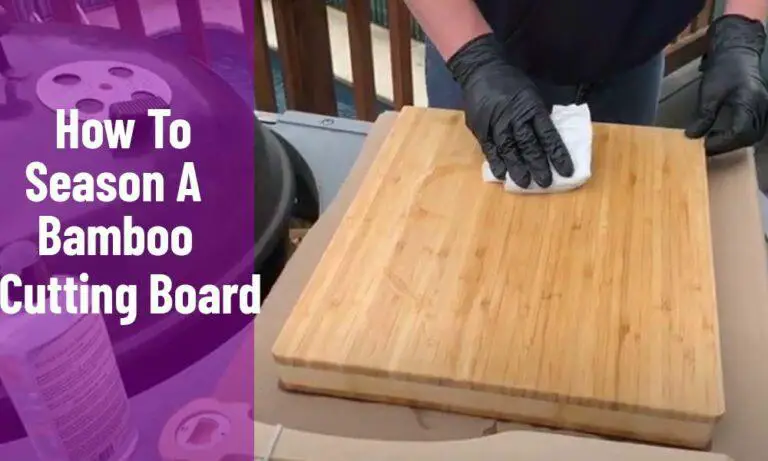Guide:How to Resurface a Plastic Cutting Board
Plastic cutting boards are a staple in the kitchen, but they don’t last forever. So, if you’re like many home cooks, you may find yourself faced with the prospect of having to replace your boring old plastic cutting board. Well, we can’t help you with that, but we can help you save money by suggesting a few tricks to help your Board last a bit longer.
If you have a plastic cutting board with scratches, you can sand them with sandpaper to make them smoother. However, if the scratches are intense, then you can resurface the plastic cutting board.
Have you noticed your plastic cutting board not looking so pretty over the years? Well, there is no need to throw it away yet, because this article will teach you how to resurface a plastic cutting board.
If you are in hurry, watch this video:
Why Should Resurface a Plastic Cutting Board?
The reason plastic cutting boards are used is that they are less likely to splinter. I notice the plastic cutting boards often tend to fracture in the kitchen. So, I have to find time to sand down the splintering Board to remove it. I use the plastic cutting board for the meat and vegetables, which is a waste of plastic.
A plastic cutting board is made of plastic, so it doesn’t break like glass cutting boards. However, the plastic will wear down over time. So, removing the cutting Board’s old surface can help prevent bacteria from building upon its surface. On the other hand, a cutting board with an old surface can become a breeding ground for bacteria.
Once upon a time, plastic cutting boards were regarded as the absolute best way to cut up raw foods. They’re easy to clean, and they don’t cut your fingers. But, unfortunately, there’s an outbreak of a bacteria called Listeria monocytogenes, which causes listeriosis.
The bacteria are usually found in soil, but they can survive for up to two years. Listeriosis is a food-borne illness that can cause a high fever, vomiting, diarrhea, headaches, and flu-like symptoms. It can be fatal, especially to the elderly.
Most plastic boards will get dull or even snap with daily use. The best method to get your plastic Board cleaned is to give it a nice sheen so that it looks like you just bought it new to resurface a cutting board.
Plastic, as you know, is made from petroleum, a finite resource that is slowly dwindling. So if we want to see more plastic in our lifetimes, we have to find a way to recycle it—and one of the most effective ways is to resurface the top to keep the valuable plastic from being wasted.
What Material Should Use to Resurface a Plastic Cutting Board?
You can use a variety of methods and materials to resurface a plastic cutting board. The most common forms are sanding, using heavy grit sandpaper, and using a power sander. The most common materials are sandpaper.
Below there are cutting board resurfacing tools, you will be needed.
- Gloves,
- Drop cloth or newspaper,
- Clamps,
- Sander,
- Sandpaper (ideally 25 grit through 80 grit),
- Metal scrubber or rough steel wool,
- Scraper/ hand plane/ razor blade (not pictured),
- Eye protection,
- Dust mask,
- Dish soap,
- Sponge.
When it comes to the sander, I use a Dremel sander. Any sanding machine will do the work, and one with more power will do the job more quickly. A belt sander or orbital sander would perform well.
The Process of How to Resurface a Plastic Cutting Board
You can generally find chopping boards in the kitchen that look like wood, stone, or glass. But plastic cutting boards are not so much cutting boards as they are plastic wrapping because the only thing people seem to do on them is cut things. But the good news is that plastic choppings are pretty easy to resurface, as long as you follow the steps listed below.
Step 1: Clamp the Board
Cover your work surface with a drop cloth, newspaper, etc, to seize the sanding remnants.
Using the clamps, securely affix the reducing Board on your work surface (I generally clamp the two corners via the take care of edge (if there may be a take care of reduce-out) because those not often get worn from use. Be sure it is clamped snugly, as scraping and sanding can create a fantastic little bit of lateral torque at the Board.
Step 2: Prep the Board for Sanding
Using the metallic dish scrubber or extra-direction metallic wool, scrape the floor to remove any free burs of plastic and start to smooth the floor. The much less extra plastic left on the pinnacle, the much less the sandpaper will gum up.
Step 3: Sand the Board
Sand the floor of the Board the usage of the coarsest grit of sandpaper. Ideally, I begin with 25grit and development to completing with 80grit. If you start too high, the sandpaper may not achieve success at disposing of the pinnacle layer of the Board.
Be sure to apply eye safety and a dirt mask because the sanding will kick up polyethene dirt that is much less than first-class to get to your system!**
And in case your reducing forums are something like mine, that is the degree while you’ll scent the aroma of the whole thing you have ever reduce at the Board popping out because the sander lightly warms the dirt. This may frequently be a hideous experience!
Step 4: If Sanding Isn’t Enough.
Depending on the intensity of cuts, the grit of sandpaper, and the energy of the sander you are using, sanding on my own won’t be sufficient. If you cannot sand away enough of the floor to take away cuts, gouges, and slices, it could be vital to CAREFULLY scrape the pinnacle layer of the Board with a razor blade, a knife blade, or ideally – a hand plane.
Then maintain sanding till grooves, scratches, and gouges are eliminated and the floor is buttery smooth.
Step 5:Clean the Surface While Sanding:
To assist expedite the method, periodically wipe the floor with the metallic wool/scrubber to take away any burs and the dirt that the sander has kicked up. Unlike wood, polyethylene tends to statically adhere to itself, making the sanding method more difficult. An ordinary wipe will assist the process.
Step 6: Clean the Edges
As the sanding method will adjust the form of the Board slightly, I take a blade and scrape the rims of the Board to get a nice smooth slope after I’m completed sanding.
Step 7: Clean the Board
Cleaning the Board has to be a three-step method.
First, rinse with water in a sink to take away free dirt and particles.
Second, practice kitchen cleaning soap and rub it together along with your hand – NOT A SPONGE- to paintings more significant of the dirt out. You need to keep away from getting your sponge protected in free polyethylene dirt. Then rinse the Board.
Third, use a sponge with a dish cleaning soap to smooth the board floor again. Rinse, allow dry and experience your like-new reducing forums.
Step 8: Enjoy Your Refreshed Cutting Surface
Not simplest is the clean floor greater sanitary (deep crevices can acquire and breed bacteria). However, it’ll additionally assist in lengthening the sharpness of the brink of your knives.
How to Maintain a Resurface Cutting Board?
To maintain a resurface chopping board, you should wash it regularly with warm soapy water. You can also add dish soap and lemon juice to cut down on stains.
With regular maintenance, a white plastic cutting board can last for many years. Wash your cutting board with warm, soapy water after each use. You can also use a knife to scrape off any stuck-on food.
If your cutting board starts to look dull, use a lemon. Rub the lemon over the entire surface of the white plastic cutting board. Then, rinse the chopping and dry it with a towel.
To keep our kitchen tools in tip-top shape, it is crucial to take care of them often. We should also be careful not to leave them outdoors, as this can cause discoloration and deterioration.
How to Remove Scratches From Plastic Cutting Board?
Here is a step-by-step process on how to remove scratches from a plastic cutting board:
- Clean the cutting board: Start by thoroughly cleaning the plastic cutting board with warm soapy water. Use a mild dish detergent and a sponge or dishcloth to scrub the surface and remove any food particles or residue. Rinse the board with clean water and pat it dry with a towel.
- Assess the scratches: Examine the cutting board to determine the severity of the scratches. If the scratches are shallow and do not affect the usability of the board, you may choose to leave them as they are. However, if the scratches are deep or numerous, you can proceed with the following steps to minimize their appearance.
- Baking soda paste: Create a paste by mixing baking soda with water. The consistency should be thick enough to spread easily but not runny. Baking soda is a mild abrasive and can help buff out the scratches on the plastic surface.
- Apply the paste: Using a clean cloth or sponge, apply the baking soda paste to the scratched areas of the cutting board. Gently rub the paste onto the scratches in a circular motion. Apply a bit of pressure to ensure the paste is effectively working on the scratches.
- Scrub the board: After applying the baking soda paste, continue scrubbing the entire surface of the cutting board. This will help to even out the appearance of the scratches and remove any stains or discoloration. Focus on the scratched areas, but make sure to cover the entire surface for a uniform finish.
- Rinse and inspect: Once you’ve finished scrubbing, rinse the cutting board with clean water to remove the baking soda residue. Inspect the board to see if the scratches have improved. Repeat the process if necessary, focusing on the deeper scratches or areas that still need attention.
- Lemon juice and sunlight (optional): If the scratches persist or you want to further reduce their appearance, you can try a natural remedy using lemon juice and sunlight. Squeeze fresh lemon juice onto the scratched areas and leave the cutting board in direct sunlight for a few hours. The acid in the lemon juice combined with the sunlight can help lighten the scratches.
- Final cleaning and drying: After treating the scratches, give the cutting board a final rinse to remove any remaining lemon juice or residue. Dry the board thoroughly with a clean towel.
Remember, while this process can minimize the appearance of scratches on a plastic cutting board, it may not completely remove deep or extensive damage. If the scratches are severe and affect the functionality of the board, it may be time to consider replacing it.
Can You Resurface a Plastic Cutting Board?
Plastic cutting boards can generally be resurfaced to some extent, depending on the severity of the damage. While it may not be possible to completely restore a heavily scratched or damaged plastic cutting board, you can try the following steps to improve its surface:
- Clean the cutting board: Start by cleaning the cutting board with warm soapy water and a sponge or dishcloth. Remove any food particles, stains, or residue from the surface. Rinse the board thoroughly and dry it with a clean towel.
- Assess the damage: Evaluate the condition of the cutting board and determine the extent of the damage. Minor surface scratches and scuff marks can usually be improved with resurfacing methods, but deep cuts or gouges may be more challenging to fix.
- Sanding method: One approach to resurfacing a plastic cutting board is to use sandpaper. Choose a fine-grit sandpaper, such as 220 or higher, to avoid causing further damage. Wet the cutting board or dampen the sandpaper with water to reduce friction and prevent melting of the plastic. Gently sand the surface in a circular motion, focusing on the scratched or damaged areas. Be patient and apply light pressure to avoid removing too much material.
- Buffing method: Another technique to resurface a plastic cutting board is buffing. You can use a polishing compound or a non-gel toothpaste along with a clean cloth or a buffing pad. Apply the compound or toothpaste to the surface of the cutting board and rub it in using circular motions. Continue buffing until the scratches start to diminish or become less noticeable. Wipe off any residue and rinse the board thoroughly.
- Final cleaning and drying: Once you have finished resurfacing the cutting board, give it a thorough cleaning to remove any remaining residue from sanding or buffing. Rinse it with water and dry it completely with a clean towel.
It’s important to note that resurfacing a plastic cutting board may only provide temporary improvement, as the underlying material may still be damaged or compromised. Additionally, excessive sanding or buffing can reduce the thickness of the board, affecting its durability. If the cutting board is severely damaged or the resurfacing methods do not yield satisfactory results, it may be time to consider replacing it for optimal food safety and functionality.
Conclusion
Many plastics can be recycled, but many other plastic pieces don’t make it through recycling at all. The most common type of plastic you’d want to recycle is polypropylene, which is used for many things, most of which you wouldn’t expect.
For example, the resin is used to make plastic water bottles, which can then be recycled. But plastic boards? Why? The only way I can think of is that they’re used to make cutting boards, and the fact that they’re so common makes it hard to recycle. So it is better to resurface your plastic cutting board and use it longer.
Suggested post:





